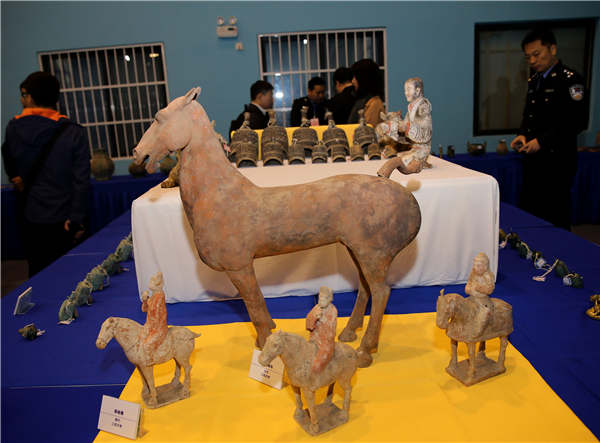 |
|
People examine relics on Tuesday that were recovered in a special operation in Xi'an, Shaanxi province. [Photo by Huo Yan/China Daily] |
The first items published on the platform are varied, from paintings, porcelains and statues to stone lions. Many were stolen in the 1990s, including porcelains stolen from a museum in Zhenjiang, Jiangsu province, and Buddha heads robbed from a cultural relic warehouse in the Ningxia Hui autonomous region. Nevertheless, some items went missing more recently.
"We don't even have clear images for some lost cultural relics," said Wu Zhongfei, a police officer from Shaanxi's provincial public security department, who is in charge of the online platform.
"We're developing new technology to portray digital models of these items to help people search for them," he said.
Wu said that apps for smartphones will also be released to help the public provide clues on the lost cultural relics.
"The platform is a way to strengthen social supervision," Liu added. "Our work will be more efficient as we make the public informed. And we need more scientific methods to safeguard cultural relics."
The administration has recently finished a nationwide investigation of threats to cultural relic safety covering 20,000 institutions across the country.
Du Hangwei, deputy governor of Shaanxi province, said the new online platform echoed China's more rigorous campaign in recent years against crimes related to cultural relics.
Shaanxi is of key historical importance in China. Xi'an was the national capital at several key times during China's imperial years, like the Western Han (206 BC-24 AD) and Tang (618-907 AD) dynasties, and thus left abundant cultural relics buried.
In Shaanxi, 2,627 suspects have been detained this year on charges of stealing cultural relics, and 1,536 national-level precious cultural relics were recovered so far, according to Du.